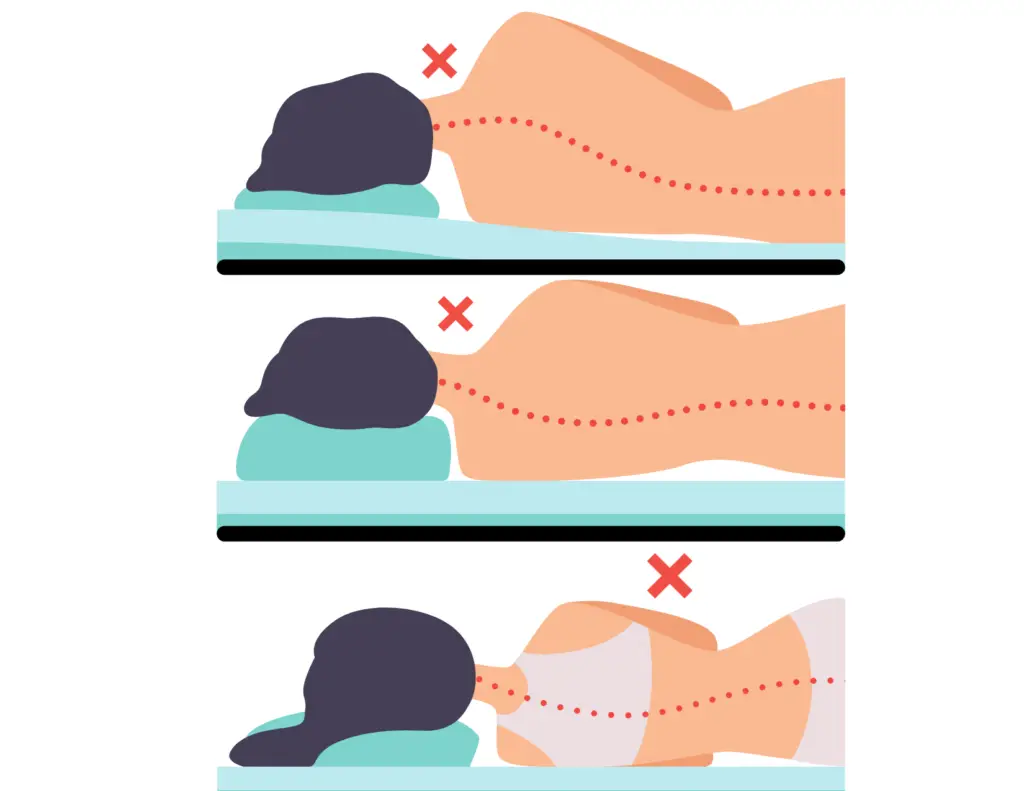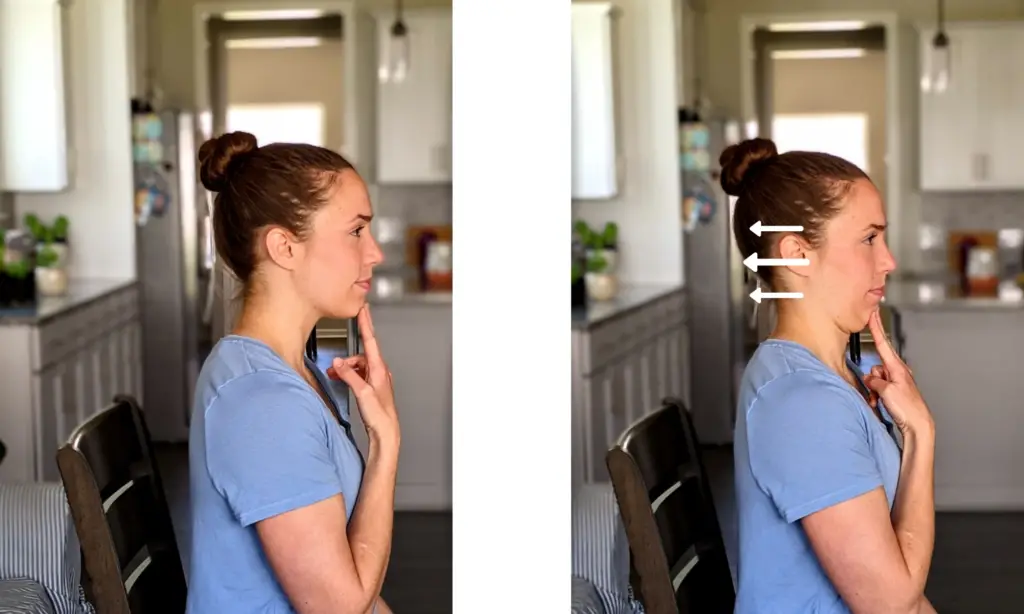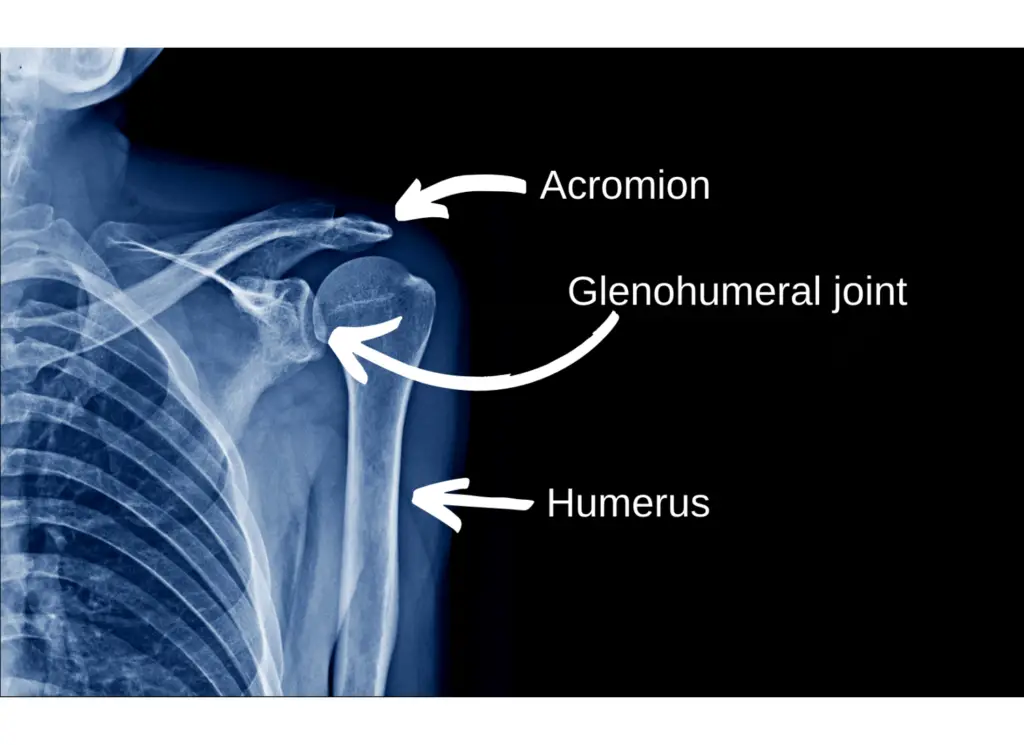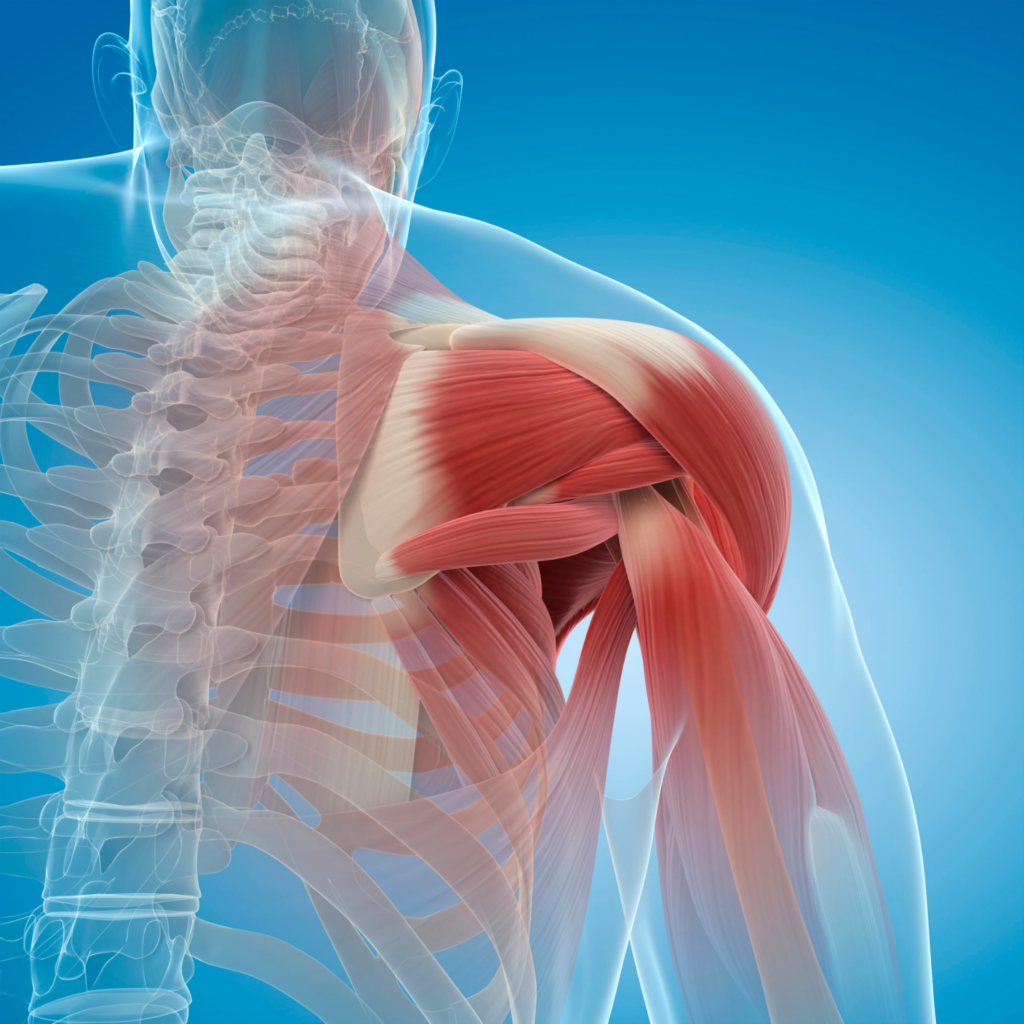Neck and shoulder pain turn a good night’s sleep into a tantalizing, distant memory. And poor sleep quality makes us exhausted, grumpy, and prone to pain.
Whether you’re nursing a sore shoulder or can’t sleep without neck pain, these 7 strategies will help you sleep better.
1) Support Your Shoulder
When you sleep, shoulder position matters. A comfortable position adds hours of shut-eye. Whether you’re a side sleeper, a back sleeper or a stomach sleeper, here’s how to support your shoulder joint for a better snooze.
Back Sleepers
Sleeping like a mummy is the best position for neck and shoulder pain. The shoulders aren’t subject to aggravating positions, like being laid on or awkwardly angled. For extra shoulder comfort, support the arms with pillows. It makes sleeping more comfortable and makes you feel like a king (or queen). Try it out!

If you’re in a sling after surgery, please follow advice from your surgeon and PT regarding sling use during sleep.
Acid reflux, snoring, or habit may preclude you from sleeping on your back. It’s okay to sleep in a different position.
Side Sleepers
Most people sleep on their side. Unfortunately, side-lying creates awkwardness for the neck and shoulders. The top arm drapes across the body and tensions the shoulder blade muscles.
The bottom shoulder bears the weight of the upper body, frequently causing pain. Plus, the bottom arm suffers from Ricky Bobby Syndrome–“I’m not sure what to do with my hand.”
Try two strategies alleviate shoulder pain from side sleeping:
First, if you can sleep on either side, sleep on the non-painful shoulder. If your left shoulder hurts, sleep on your right side, and vice versa. Support the painful shoulder with a small pillow under the arm.

Or use a body pillow to support the top arm as it rests in front of you. A pillow under the top arm reduces tension on the shoulder muscles. Plus, keeping the upper arm away from your side improves the blood flow to the rotator cuff.
Second, if your preferred position is sleeping on the painful side, wedge a pillow behind your back. A body pillow is a great option. Try this top-rated option:

The pillow lets you roll ¼ turn towards your back. This is a sweet spot between lying entirely on your back and lying directly on top of your shoulder.
Stomach Sleepers
I’m a shameless stomach sleeper. Some people believe that stomach sleeping is terrible for your body and destroys your musculoskeletal system. It doesn’t.
While it’s not ideal for neck and shoulder pain, many perfectly healthy people sleep on their stomachs. Personally, I sleep with one arm up and one arm down.
If you sleep on your stomach and refuse to change positions (it’s tough, I’ve tried!) you’re better off with the affected arm down at your side. If you like feeling pain when you wake up, keep the sore shoulder overhead or under your pillow. (Ouch!)
Regardless of your preferred sleep position, it’s possible to find a comfortable position for your injured shoulder. Next, we’ll examine how to put the neck in the best position for restful, pain-free sleep.
2) Change Pillows
Find the right pillow for your body’s anatomy. The ideal pillow can erase neck and shoulder pain during sleep.

Our body craves neck support at rest. If you wake up with your arms in contorted positions to support your neck, consider finding a better pillow.
Pillows are not one-size-fits-all. The ideal pillow is comfortable, supportive, and well-suited to your neck anatomy and sleeping position.
As a general rule, supportive pillows that conform to your neck structure will help you sleep better. Stomach and back sleepers prefer thinner pillows, while side sleepers require bulkier pillows to maintain a neutral neck position. For example, many side sleepers like the Weekender pillow:

3) Align Your Spine
I’m not talking about getting a neck adjustment because it’s “out of alignment.” Neck misalignment isn’t a proven phenomenon and probably isn’t causing your pain anyway (1,2).
Instead, I mean that supporting your neck in a neutral position enhances your comfort and sleep.

Imagine bending your head to the side and holding it like that for an hour. You’re probably going to be sore and develop a “kink” in your neck. Similarly, sleeping with the neck in a bent or twisted position isn’t ideal if you want to wake up feeling dangerous.

If you can’t find a pillow that agrees with your neck, use my folded towel hack to support the curve in your neck. It’s a tried and true technique that’s beloved by patients. It’s responsible for countless long, restful nights of sleep.

Place a folded towel–a bathroom hand towel will do–inside the pillow case and underneath the pillow. The towel is shown outside the pillowcase for visual purposes. But it stays in place far better inside the pillowcase.
Move the towel to the edge of the pillow, so it supports your neck as you lay on your side. Adjust the thickness of the towel for maximum comfort.
Side sleepers love this hack!
4) Do Chin Tucks
Physical therapists use chin tucks (also called cervical retractions) to assess for neck involvement in shoulder pain. Pain referral from the neck is frequent source of shoulder pain–it’s relevant 50% of the time! (3)

Shoulder pain with sleeping, unclear onset, and concurrent neck pain heighten my suspicion of neck involvement in shoulder pain.
In the clinic, I check neck and shoulder motions before and after chin tucks to assess for changes. Half the time, shoulder motions immediately feel better after chin tucks. Patients literally ask me if it’s magic!
Chin tucks also work wonders for neck pain and can alleviate arm numbness and tingling from a pinched nerve in the neck.
5) Strengthen Your Shoulder
Shoulder strength is the cornerstone of a stellar shoulder rehab treatment program. The rotator cuff is a group of muscles that stabilizes the glenohumeral joint during activity.

Muscles around the shoulder blade work together with the rotator cuff to promote optimal shoulder function.

Exercise has a known pain reduction effect, called “exercise-induced analgesia” (4). Plus, isometric exercise is especially potent for tendon pain relief (5).
To learn the best exercises for shoulder pain, check out my favorite strengthening exercises for shoulder impingement.
Physical therapy is the best treatment option for most cases of shoulder pain. It stacks up well against surgery for many conditions. Even rotator cuff tear outcomes are similar for PT and surgery! (6)
6) Treat Trigger Points
Tight spots in the shoulder blade muscles frequently cause shoulder pain. The infraspinatus muscle is a common culprit that even sends pain down the arm. Dry needling and manual therapy alleviate trigger point pain–Many of my patients employ the infraspinatus release to relieve sore spots around the shoulder blade.

Grab a tennis ball or a lacrosse ball. Lean against a wall, applying pressure to the sorest area of the muscle. Hold 30 seconds before moving to another spot. When done right, this exercise “hurts so good.” It’s a patient favorite for shoulder pain relief.
Snag your pain-relief tool here:

7) Optimize Sleep Hygiene
Sleep hygiene refers to your habits around bedtime.

You’re probably familiar with many suggestions:
- Avoid caffeine before bed
- Go to bed and wake up around the same time every day
- Use your bed exclusively for sleep and intimate activities
- Keep your bedroom cool and dark for an optimal sleep environment.
These less-known habits will help you sleep better too. You may not appreciate these, so consider yourself warned.
- Avoid alcohol consumption right before bed because it disrupts your sleep cycles.
- Limit phone and TV time because the blue light from devices stimulates your brain to stay awake
- Stay away from pulse-pounding movies and shows (or the 11:00 news!) before falling asleep.

If it gets your heart racing, your mind will be racing too.
Bonus Tip: See a Physical Therapist
Persistent, severe, or chronic pain warrants medical attention. A skilled physical therapist will determine the cause of pain and develop a treatment plan for your neck or shoulder–PT is the best option for initial treatment.

In addition, physical therapists learn how to identify signs and symptoms of medical conditions which require a referral to a physician or surgeon. In rare cases, night pain can indicate serious pathology which requires medical treatment.
Final Thoughts
Most shoulder and neck problems resolve with evidence-based conservative treatment (like physical therapy, not slathering CBD oil on the sore spot). Surgery is usually avoidable.
Looking for how-to guides to relieve pain? Check out Treat Your Own Shoulder and Treat Your Own Neck, popular books that have empowered patients to take control of their pain and find relief without shots, pain medication, or surgery.


For more expert insights you won’t find anywhere else, join the free, fast-growing Facts & Physio Newsletter. Plus, get The Recovery Checklist when you sign up.

